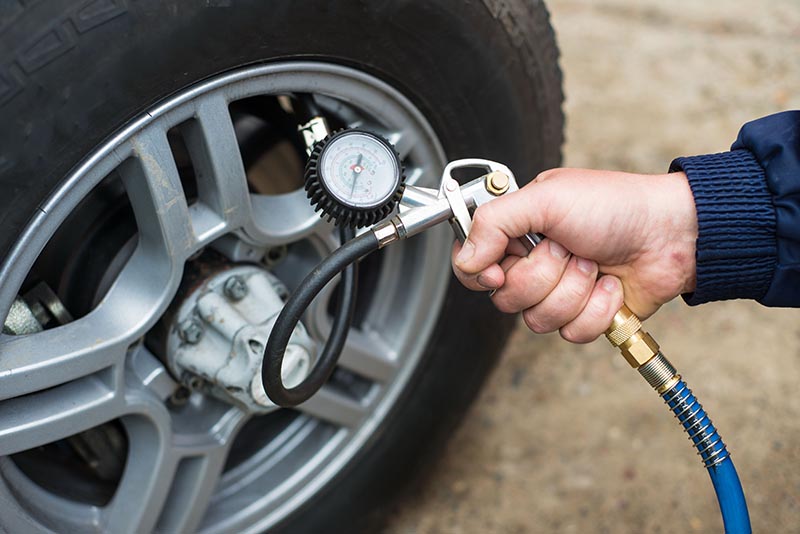What Should My Tire Pressure Be? Facts & FAQs
-
Codee Chessher
- Last updated:

If you’ve noticed some trouble with your tires recently, the tire pressure may be the culprit. Even if your tires seem fine, it’s important to be aware of how much pressure your tires need to operate smoothly.
For most small passenger cars, your car manufacturer will typically recommend between 32–35 pounds per square inch (PSI) in each tire. For medium-sized vehicles like SUVs, you’re looking at between 30–35 PSI, depending on if you’re carrying heavy cargo or towing. For pickup trucks, between 38–40 PSI is recommended.
Knowing the correct tire pressure for your tires is essential because driving on underinflated tires is one of the leading causes of tire failure. Let’s find out some other handy info about tire pressure and what you should know.
How to Know the Right Tire Pressure for Your Vehicle
Most vehicles today have a convenient sticker located on the driver’s door that lists standard tire pressure levels as advised by the car manufacturer. You can usually find this on the side of the driver’s door when you open it.
For more specific information, you can consult your car’s manual. Most carmakers will detail what maintenance is required in regard to the tires in the manual. Some tire sidewalls also come with the PSI labeled on them. If you don’t have your manual or it didn’t come with your used car, contact your car manufacturer directly for guidance.

How Often Should I Check My Tire Pressure?
Depending on how much you drive, you should check your tire pressure once or twice a month. Your tires lose about 2–3 PSI each month on average. If you simply take a few extra moments to check your tires when you fill your gas tank, you can help prevent critical wear and tear on your tires. Having the right pressure in your tires can even improve your car’s fuel economy.
To check your tire pressure, unscrew the valve stem on your tire (don’t lose it!) and press the end of a tire pressure gauge into the stem. If nothing happens, press the gauge into the stem a bit until the gauge displays a number.
What Happens if My Tires Aren’t Adequately Pressurized?
Your tires could pop or otherwise fail without the right pressure. In fact, according to the National Highway Traffic Safety Administration, there’s a whole laundry list of detrimental effects that could arise from your tires not being properly pressurized. No surprise there, considering they also say that improperly pressurized tires are the top cause of tire-related incidents!
Let’s check out a few of the negative effects that you could experience if your tires aren’t properly inflated.
- Reduces your car’s fuel economy
- Releases more greenhouse gasses into the air
- Costing you as much as 11 more cents per gallon
- Reducing your tires’ lifespan by as much as 4,700 hours
- Drastically increased chance of tire failure

What Happens if I Over-Inflate My Tires?
Many people over-inflate their tires to try and get ahead of tire maintenance thinking that they won’t have to check their tires or inflate them as often. Sadly, it doesn’t work that way.
When you put too much air in your tires, they stretch and can’t make as much contact with the ground. This leads to poor traction, and it makes the tires wear unevenly. Think of an overfilled balloon. Over time, the tire will wear out much faster than one that was regularly filled to the recommended air pressure level.
Conclusion
It’s crucial to make sure your tires are properly inflated to the right pressure level. With inadequate air pressure, you face all kinds of negative effects, including tire failure, and nobody wants that to happen. You could be putting yourself and other drivers at risk. Just take it from us—check your tire pressure regularly. It could just save a life.
Featured Image Credit: Burmakin Andrey, Shutterstock
Contents
